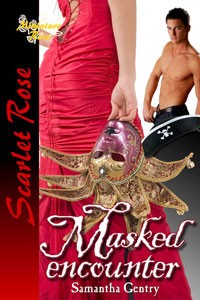This week is part 1 of a 3-part blog about the Middle
Ages/Medieval times. It seems that every generation looks back at older
generations and judges the customs, beliefs, and traditions of that time in
history by comparing them to the present. Some comparisons are valid and some
are not. However, I think it's fair to say that there are few periods in
history that we regard as strangely as we do the Middle Ages—Medieval times.
The Middle Ages are generally considered an unlucky time to
be born and today's popular belief is that people were poor, food was dull,
everything was dirty, and for the vast majority of that historical period the people
were dropping like flies. What we don't often hear about is that people created
some of the most peculiar, bizarre, hilarious, and astounding trends in human
history. Let's take a look at some of the peculiarities of the Middle Ages.
1. Animal court
Life in medieval times was just as tough for animals as it
was for humans. Just like their human owners, all manner of animals from
livestock to insects were put on trial if they were suspected of breaking the
law. There are records of at least 85 animal trials that took place during the
Middle Ages that range from tragic to absurd.
The most common offenders were pigs accused and convicted of
chewing off body parts and even eating children. Most were found guilty and
sentenced to death. And it wasn't just pigs that felt the wrath of the law. In 1474,
a court found a rooster guilty of the unnatural crime of laying an egg,
rats often found themselves on the receiving end of a strongly worded letter
asking them to leave the premises, and in 1596 in Marseilles some dolphins were
put on trial.
Surprisingly, not all of the trials ended in brutality. One
donkey found herself the victim of unwanted sexual advances. She was proclaimed
innocent after a strong recommendation from a convent's prior, declaring her to
be a virtuous and well-behaved animal.
2. Fabulous men's fashion
Clothes were hugely important to the elite of medieval times.
It was a way for them to display their wealth and overall superiority over the
poor. Because of this, various unusual fashion trends swept through Europe,
such as long, pointed shoes for men. The longer the shoes, the greater the
wealth of the man and, therefore, his social rank. Some of the shoes were so
long they had to be reinforced with whalebone. In the late 14th century,
men desired to show off their bodies by wearing revealing clothing such as very
short tunics with tights.
3. Shotgun weddings
Much of what people assume about medieval upper-class
marriage is true. It was rarely for love but merely for political and social
gain. Women, as with almost all aspects of medieval life, had no say in the
matter. Men and women were judged to be ready for marriage as soon as their
bodies reached puberty, as young as 12 for girls and 14 for boys.
The marriage ceremony of the time was very different from
today. There wasn't a formal ceremony. It took only a few moments to utter
consent wherever they happened to be. This meant it became rather hard to prove
people were actually married. In the 12th century, it was declared a
holy sacrament that must be observed by God. The consummation of the marriage, especially
among upper-class newlyweds, was far from private. It was observed by
witnesses.
4. Courtly love
Most upper-class medieval marriages were loveless unions
designed for financial and social gains. Medieval nobles fulfilled their
romantic desires in what was termed courtly love. This allowed lords and
ladies to practice the elements of love regardless of their marital status. This
involved the risqué actions of dancing, giggling, and even holding
hands. Sex, however, was strictly forbidden—reserved for one's spouse only.
Courtly love was so popular, a list of rules was written up including:
"Marriage is no real excuse for not loving."
5. Divorce by combat
Couples in medieval Germany didn't waste time when it came
to solving their disputes. Rather than just arguing like any normal couple, trial
by single combat was a popular way to solve disagreements. When man and wife
were fighting, there were bizarre restrictions such as the husband standing in
a hole with a hand behind his back while his wife ran around with a sack filled
with rocks.
6. Hairless faces
While today many women spend money to accentuate their
eyelashes and eyebrows, it was completely different in the Middle Ages. Because
the forehead was seen as the central point of their faces, women would remove
their eyelashes and eyebrows in order to accentuate it. Some were so committed,
they would pluck their hairlines to achieve a perfectly oval, bald face.
7. A beautiful death
People in the medieval times were very preoccupied with
death, which is understandable if you consider how pious society was at the
time, and also the fact that many people were falling victim to the Black
Death. As a result, a trend known as ars moriendi or the art of dying,
came into fashion. The idea revolved around dying a good Christian death. The
death should be planned and peaceful. To add further stress, the dying person
should accept their fate without despair, disbelief, impatience, pride, or
avarice. Dying well was particularly popular with the priesthood, which led to
many of the infamous medieval paintings of monks and holy men accepting their
brutal murders with calm serenity.
8. Soccer without rules
If you thought professional sports hooligans were a modern
phenomenon, you might want to reconsider that concept. Medieval England had
sports-related mob violence before the sports were even named. What we regard
today as soccer (or football outside the U.S.) was violent, chaotic, and occasionally
deadly. It involved an infinite number of players, could take part across
entire villages, and often it was the opposing team being kicked rather than the
ball. In 1314, King Edward II decided enough was enough and forbid the game.
9. Unicorns and Jesus
Medieval people loved two things, mythology and religion. These
often combined in a very peculiar way. Due to a mistranslation of what was
likely intended to be an ox, people commonly believed that the Bible likened
Jesus to a unicorn. People at the time went with this idea, and the unicorn repeatedly
cropped up in religious medieval art.
10. Jesters
Being a jester in the Middle Ages may seem like a terrible
fate. After all, their hats were modelled after the ears of an ass. But jesters
were also granted unique privileges. As everything that came out of their
mouths was by royal decree, words to be taken in jest, they could get
away with slandering the lords and ladies of court. They could voice their
political opinions in a time when doing so was strictly forbidden.
11. The Feast of Fools
Many people of medieval Europe joined together at the
beginning of January to celebrate the Feast of Fools. Like most Christian
festivals, this eclectic event was inspired by a pagan festival of Saturnalia. The
highest respected officials swapped with the lowest, serving maids became
masters and a king of misrule was crowned. Although originally intended to be
confined only to the hallowed halls of churches, the common people took it upon
themselves to celebrate. There were parades, comic performances, costumes,
cross-dressing, bawdy songs, and drinking to excess.
Not entirely related but equally as difficult to comprehend,
the Festival of the Ass presented a young girl carrying a child and riding a
donkey into church. Throughout the service, the congregation replaced
"amen" with a "hee-haw." Considering the celebration was
held in super-strict Christian medieval Europe, it's impressive it survived for
so long. However, over time the rules were tightened, certain acts forbidden,
and the final nail in the coffin of fun came with the Protestant reformation.
And there you have it—a different look at the Middle
Ages/Medieval Times. Check here next week for a look at part 2 of my 3-part
series for a look at some surprising facts about that time.



































